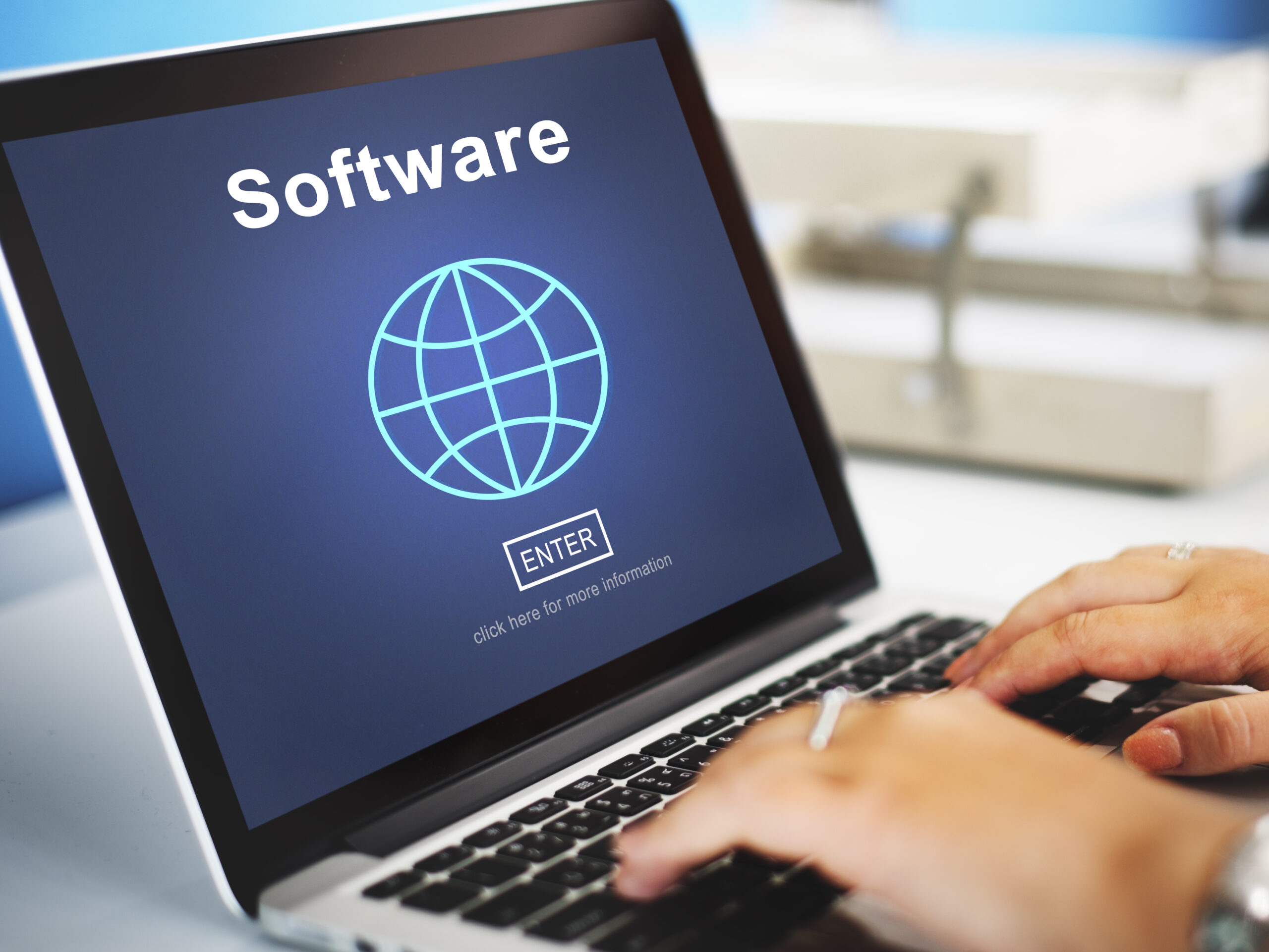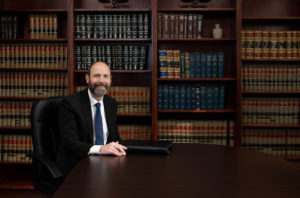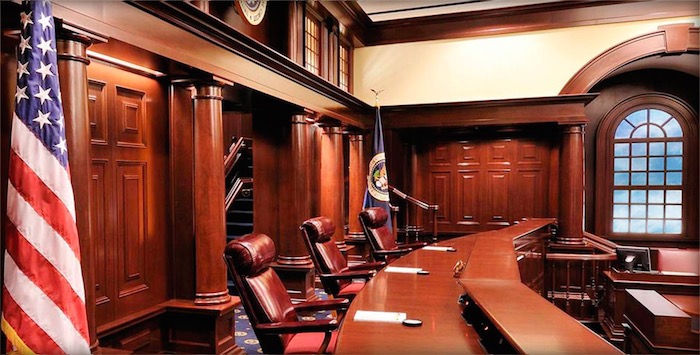The SaaSy Patent Lawyer’s Guide to Patenting Software as a Service
“The inherently transitory, distributed, and dynamic nature of SaaS…makes it challenging to obtain patent claims for SaaS inventions that are directly infringed, requiring careful and strategic claim drafting to address these complexities.”
Software as a Service (SaaS) has emerged as a dominant model for delivering software solutions. Before SaaS, we tended to buy and use increasingly powerful computers to run increasingly powerful software locally. The advent of high-speed, wireless, always-available Internet connectivity shifted this model towards cloud-based software execution, with our local devices acting mainly as “thin clients” that interface with remotely executed software. However, certain functions, such as highly sensitive encryption and low-latency tasks like conversational AI, still need to be performed locally. This results in a complex and fluid division of labor among distributed systems.
The technological and commercial benefits of SaaS make it appealing to both vendors and customers, underscoring the need for robust patent protection for SaaS innovations. However, the very features that make SaaS attractive also introduce unique challenges in obtaining and enforcing strong, broad, and defensible patents. The distributed nature of SaaS, intricate client-server interactions, and diverse legal constructs governing its use add layers of complexity to patenting SaaS technologies.
What is SaaS?
SaaS refers to a method of software delivery and licensing in which software is accessed online, typically via a subscription, rather than purchased and installed on individual computers.
More specifically, SaaS includes a combination of:
- the technical mechanisms by which the software is delivered to its users, such as by distributing the software across a client and a server;
- the legal constructs that govern ownership and use of the software, such as an end user license agreement which grants the customer rights to use the software in specified ways; and
- the software’s payment terms, such as a one-time fee for perpetual use or, more commonly, a recurring subscription fee.
Prior to SaaS, software was often sold on physical media (such as CDs or USB drives) or as a downloadable package that users installed on their devices. This traditional model typically involved a single transaction for a perpetual license. In contrast, SaaS eliminates the need for physical distribution and local installations, offering a more dynamic and flexible approach to software delivery.
Challenges of Patenting SaaS and Enforcing SaaS Patents
Challenges of patenting SaaS that result from the above features include:
- Transitory Nature: The transitory nature of SaaS, being accessed over the internet rather than installed locally, poses challenges for patenting. Products and processes qualify as patentable subject matter more easily when they take a tangible and non-transitory form.
- Distributed Execution: SaaS systems are inherently distributed, often involving multiple servers and clients that interact over a network. This distribution can complicate the drafting of patent claims that can be infringed by a single entity to avoid divided infringement.
- Dynamic Environment: The environment in which SaaS operates is highly dynamic, with frequent updates and changes in how the software is deployed and used. This fluidity can make it difficult to draft patent claims that remain relevant, infringed, and enforceable over time.
A fundamental challenge of patenting SaaS innovations effectively is that patent claims, whether in method or product form, are only directly infringed when a single party performs the method or makes, uses, or sells the product. Consider a traditional consumer product, such as a mousetrap. A new type of mousetrap typically is straightforward for a skilled patent practitioner to capture in a product claim because the entire invention is embodied in a single, tangible object. When someone makes, uses, or sells the mousetrap without permission, it is clear that a single entity is directly infringing the patent. Although even such products may be sold as kits or in other ways that can pose infringement challenges, they are relatively discrete and self-contained units that can be mapped onto individual patent claims.
The inherently transitory, distributed, and dynamic nature of SaaS means that different parts of the software and its functions are often spread across multiple entities, complicating the identification of a single infringing party. This makes it challenging to obtain patent claims for SaaS inventions that are directly infringed, requiring careful and strategic claim drafting to address these complexities.
Although other kinds of software can be transitory and dynamic to some extent, non-SaaS software at least typically executes on a single computer, thereby making it easier to identify and prove direct infringement. Enforcing patents against SaaS implementations carries with it all of the challenges of enforcing traditional software patent claims, plus the added complexities associated with the distributed nature of SaaS.
SaaS Patent Practice Pointers
Obtaining enforceable patents for SaaS requires strategic claim drafting, extensive specifications, and a deep understanding of how SaaS can be implemented in a variety of technological and commercial settings. These foundational elements are useful for writing SaaS patents that are as broad and flexible as possible, so that they can be asserted against the wide variety of ways in which any particular SaaS invention may be implemented across devices and infringing parties.
The following are some key practical strategies that patent practitioners can use to increase the likelihood of direct infringement by a single party and to maximize the ease of enforcing such patents.
Drafting Claims for Single Entity Performance
To minimize the risk of divided infringement, patent claims should be crafted to ensure that all steps of a method or all components of a product are likely to performed or utilized by a single entity. Typically, it is most desirable for that entity to be the SaaS provider, because such an entity is more likely to infringe at a large scale than individual customers of the SaaS solution.
As this implies, it can be helpful to write claims that focus solely on server-side operations, rather than including both server-side and client-side operations in a single claim. An independent claim that is likely to be infringed solely by the server will reduce the chances of divided infringement.
Conversely, claims that are infringed solely by the client can also be useful, even if they typically are less commercially valuable than server-side claims. In some cases, the client side of the system may be implemented by large infringers.
It is also worth considering pursuing claims that include both the server and client. Even though such claims are more likely to encounter divided infringement, such claims may be more easily patented, whether due to the ease of demonstrating patent-eligibility for a multi-computer system, or the ease of proving nonobviousness for a method that is distributed across multiple computers in an unusual way. And if the server and client are both owned or operated by a single entity, divided infringement may not be an issue.
Comprehensive Claim Sets
Including a combination of method and product claims in a SaaS patent can provide broader protection and capture different aspects of the SaaS technology. Method claims can be used to detail the processes performed by the SaaS platform. Ensure that these claims are structured to avoid divided infringement by focusing on steps likely performed by the SaaS provider.
Product claims can be used to cover the software system’s architecture and components, including client-server interactions. This helps in targeting the SaaS provider who controls the overall system.
System claims can encompass the entire SaaS platform, including both client and server components. These claims can address the interaction between different parts of the software, providing a holistic view of the innovation.
Although it might seem that method claims are inherently preferable over system claims for SaaS inventions because of the service-based nature of SaaS, system claims can have high infringement value if a SaaS developer sells its solutions to other parties but does not provide the SaaS-based solution as a service itself.
Employ Functional and Structural Language
It can be useful to obtain claims that employ functional language and claims that employ structural language in the context of SaaS inventions are part of a comprehensive patent strategy.
Functional language describes what the invention does rather than how it does it. This approach offers several benefits in the context of SaaS. For example, SaaS technologies are often implemented in various ways across different platforms and environments. Functional language helps cover these diverse implementations without being tied to specific technical details. For example, a claim for “managing user authentication” can encompass various authentication methods (passwords, biometric, two-factor) and technologies (cloud-based, on-premises, hybrid systems).
The SaaS landscape is dynamic, with frequent updates and advancements in technology. Functional claims ensure that the patent remains relevant and enforceable even as the underlying technologies evolve. For example, a claim for “real-time data synchronization” remains applicable whether the synchronization uses traditional database methods, distributed ledger technologies, or future innovations.
Functional language can provide broader coverage, making it easier to capture infringers who perform the same overall function, even if they use different technical approaches. For example, SaaS involves distributed systems where different components interact over a network. Functional claims can simplify enforcement by focusing on the overall function rather than the specific distribution of tasks across components.
Using functional language in claims for SaaS technology provides flexibility, broad protection, and adaptability, which are crucial in the fast-evolving and diverse SaaS landscape. Functional claims help capture the essence of the service, simplify enforcement, and align with the dynamic nature of SaaS, ensuring robust and lasting patent protection.
Structural language specifies the particular components and their arrangements within the invention. Using structural language can provide a variety of benefits for SaaS-based inventions.
For example, structural language can help to clearly define the technical aspects of a SaaS invention, which can be useful for demonstrating patent eligibility. For example, claim limitations that refer to specific types of hardware components (e.g., GPUs) can be useful for demonstrating that the claim is not directed merely to an abstract idea. Even software-based structural limitations can be useful for this purpose, such as “A system comprising a client device configured to transmit user data, a server configured to receive and process the data, and a database for storing the processed data.”
Structural claim language can also be useful for demonstrating novelty and nonobviousness by overcoming more generic prior art. For example, an encryption algorithm may use well-known steps such as hashing, which may prove difficult to distinguish over the prior art even if the claimed method makes a new use of the well-known steps. Structural limitations, whether in the form of hardware or software components, can more clearly distinguish over such prior art, and shift the burden back to the Examiner to find prior art references that explicitly teach such structural limitations.
Using both functional and structural language in SaaS patent claims provides a powerful and comprehensive approach to securing robust patent protection. Functional language offers flexibility and broad coverage, capturing various implementations of the technology and adapting to rapid advancements. Structural language, on the other hand, ensures precision and clarity, highlights specific technical innovations, and facilitates the identification and enforcement of infringements. By combining these approaches, patent claims can effectively protect the core functionalities of SaaS technologies while also detailing the unique configurations and components that make them innovative. This dual strategy maximizes the scope of protection, enhances the defensibility of patents, and ensures they remain relevant and enforceable in a dynamic technological landscape.
Strategic = Strong
Patenting Software as a Service (SaaS) presents unique challenges due to its distributed, dynamic, and transitory nature. Despite these complexities, obtaining strong and enforceable patents for SaaS technologies is critical to protect and leverage these innovations in a SaaS-dominated market. By understanding the specific hurdles, such as the need to avoid divided infringement and the importance of crafting claims that remain relevant over time, patent professionals can strategically obtain and enforce SaaS patents that offer robust protection.
Image Source: Deposit Photos
Author: Rawpixel
Image ID: 109037276






